会议投稿200-300字
期刊论文 150-200
文体结构+语言特征
move1 话题重要性
已有研究结果--1句话
某个研究对当前论文的启示
move2 当前研究必要性
move 3 概况研究目的/问题/假设
会议投稿200-300字
期刊论文 150-200
文体结构+语言特征
move1 话题重要性
已有研究结果--1句话
某个研究对当前论文的启示
move2 当前研究必要性
move 3 概况研究目的/问题/假设
16.The comprehension data were elicted using a sentence-picture matching task and a sentence-matching reaction time expreriment. The two types of comprehension data provide a principled means of distinguishing between semantic and morpho-syntacitic processing.[Step 3 ]
对研究方法有效性、价值的描述
Move 5
17. A discourse analysis of both research interviews and writing conferences illuminated the different orientations and positionings that emerged in relation to multilingual policies.[Step 1]
数据分析的框架是什么
18 Each token(or set of tokens) was then coded and organized into three broad domains;corporate, pedagogical, and hybrid.[Step 2]
数据分析的过程是怎样的,数据分成几类。
19 To this end, the study applied k-means clustering to changes in the relationship between each student's L2 and L1 writing abilities and L2 proficiency over time. This innovative use of cluster analysis is particularly useful for probing patterns in chornological relational changes in interactions between mutually influential variables as opposed to its conventional application to synchronic relations between them.[Step 3]
第一句把分析的步骤、分析的工具(k-means clustering)做了阐述;下一句把这个分析方法为什么好进行了说明(这个有创意的做法特别有用,可以帮助我们发现一些patterns)
Move 6
20 The analysis uncovers that emphasis on service is overshadowed by the selling of an exciting,coming-of-age adventure, while at the same time downplaying difficulties associated with volunteering.[Step 1]
对研究结果有个明确的汇报
21 The main analysis of the current study revealed a significant role for both VK and SK in explaining success in L2 listening comprehension, which differes from findings from previous empirical studies.[Step 2]
跟之前的研究进行比较
Move 6 &7 Examples
22 The findings of the current study have both pedagogical and methodological impolications for L2 Chinese assessments, SLA research as well as classroom instruction.[Move 6 Step 3]
研究结果本身的意义
23 We begin by reporting the results with textual examp;es to illustrute students'ciatation practices, followed by implications for citation studies and suggestions for enhancing students'citation practices.[Move7 Step1]
在这个汇报(会议宣读论文)当中会先做什么、再做什么。
完整的摘要举例 I 会议论文摘要
第一段第一句话,Move 3 Step1,论文的目的;
从第二句话开始,回到Move1:先对话题本身的重要性进行描述,然后指出研究中的空白;再说本研究填补了空白
第二段:对研究数据的收集、分析,结果的重要性做了阐述。会议论文摘要对研究方法、数据结果的描述很看重,因为看不到全文;
完整的摘要举例II 期刊论文摘要
是一个概况,不会有太多细节,但是各个Move与框架还比较吻合
第一句话把研究话题的重要性与当前研究的情况(两个that从句)放在一起,把Move1 和Move 2放在一起。
第二句话讲本研究关注一个特别具体的指标,看它对标题中提到的三个方面有什么影响。把Move 2与Move 3 step1 结合起来。
第三句话对研究方法、研究过程做了描写。
接下来对分析的结果进行描述。
最后指出分析的结果对教学有意义
1. 概括研究问题本身
2. 分析对象呀或研究范畴
3 概括研究目标
4 与研究话题或角度相关的概括
ya
1. 准确概括和描述所研究的问题。你就是把研究的问题用陈述语把它准确的描述和表达出来。这样类型标题的好处或者优点就在于读者看到标题以后就可以很清楚地知道他研究的是什么,而且可以有一定的预期。
2. 第二种就是把研究问题所关注的对象或者是一个小的范畴放在标题里面,而不是研究问题本身。这种标题的好处呢,就是让读者你很清楚的看到他的研究对象。对这个话题有所了解的读者也可以来判断,这个话题研究的目的是什么。
3.
如何从审稿人与读者的角度出发,为以下研究方法的各部分提供充分的描述、细节与支撑
研究问题
研究问题为研究目标下的具体问题
研究问题的新意与意义关系到论文本身的新意与意义
研究问题一般为1-4个,2-3个最常见
各个研究问题应既相对独立又互有联系
研究问题的表达应简洁、清楚、准确
研究方法其他部分
注意从审稿人与读者的角度出发,为研究方法的各部分提供充分的描述、细节与支撑
1.participants of the study:取样方法、背景描述、分组方法
2.(corpus)data:数据描述、数据代表性
3.instruments (of data collection):工具描述、举例额、信度与效度
4.procedure (of study and/or data collection):时间先后顺序、间隔
5.data analysis: measures, data analytic methods:数据分析指标选取标准、数据分析工具以及准确率介绍、数据分析方法介绍
注意突出那些数据种类与数据分析方法用于回答哪些研究问题
并不是完全一节一节的分开需整合起来。
注意区别是对以后研究的启示还是对qian ren yan jiu jie guo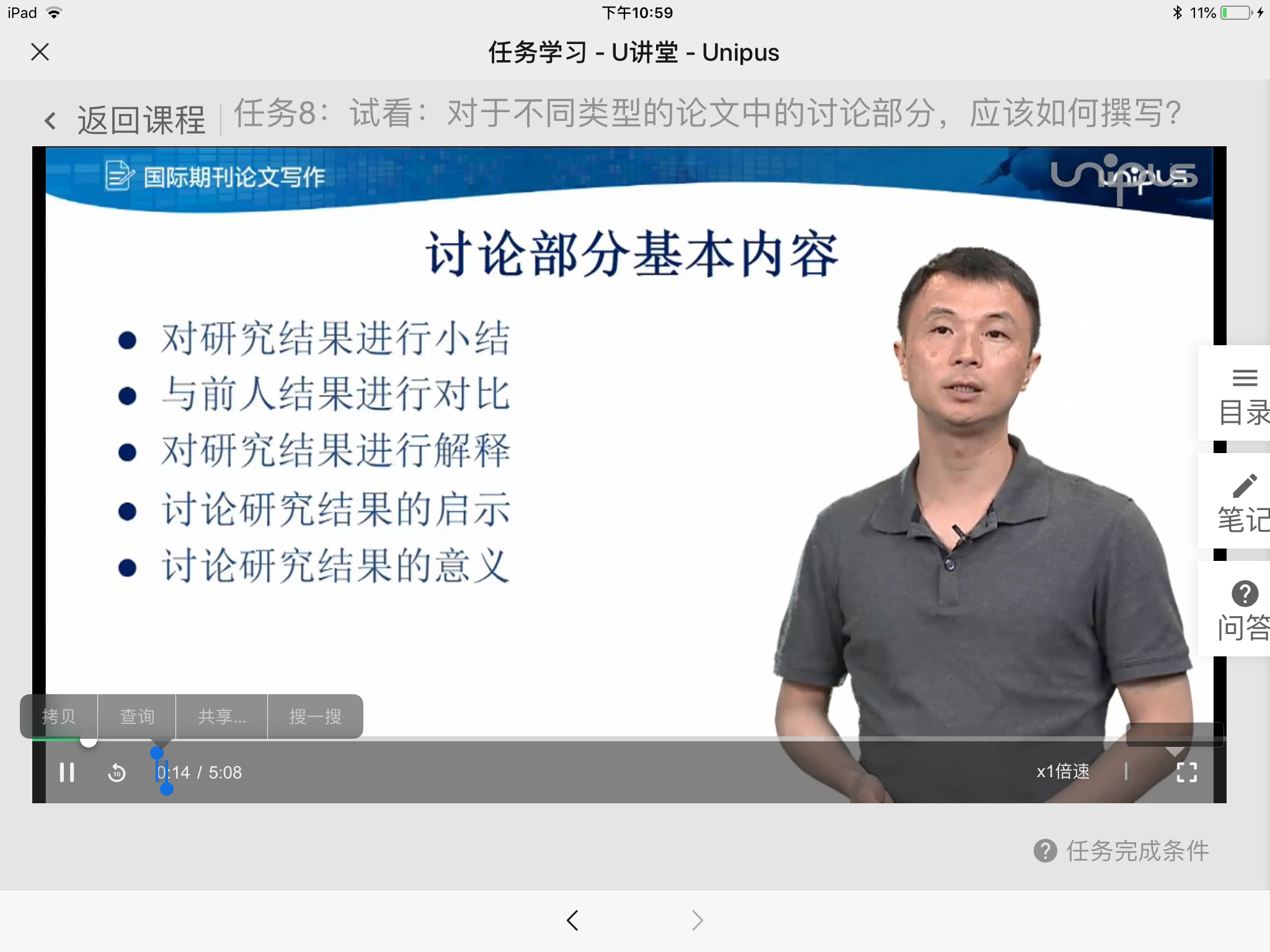
b
研究目的或者是对研究的内容进行简单的小结。
对研究结果的意义讨论,有些放在讨论部分 有些放在结论部分。
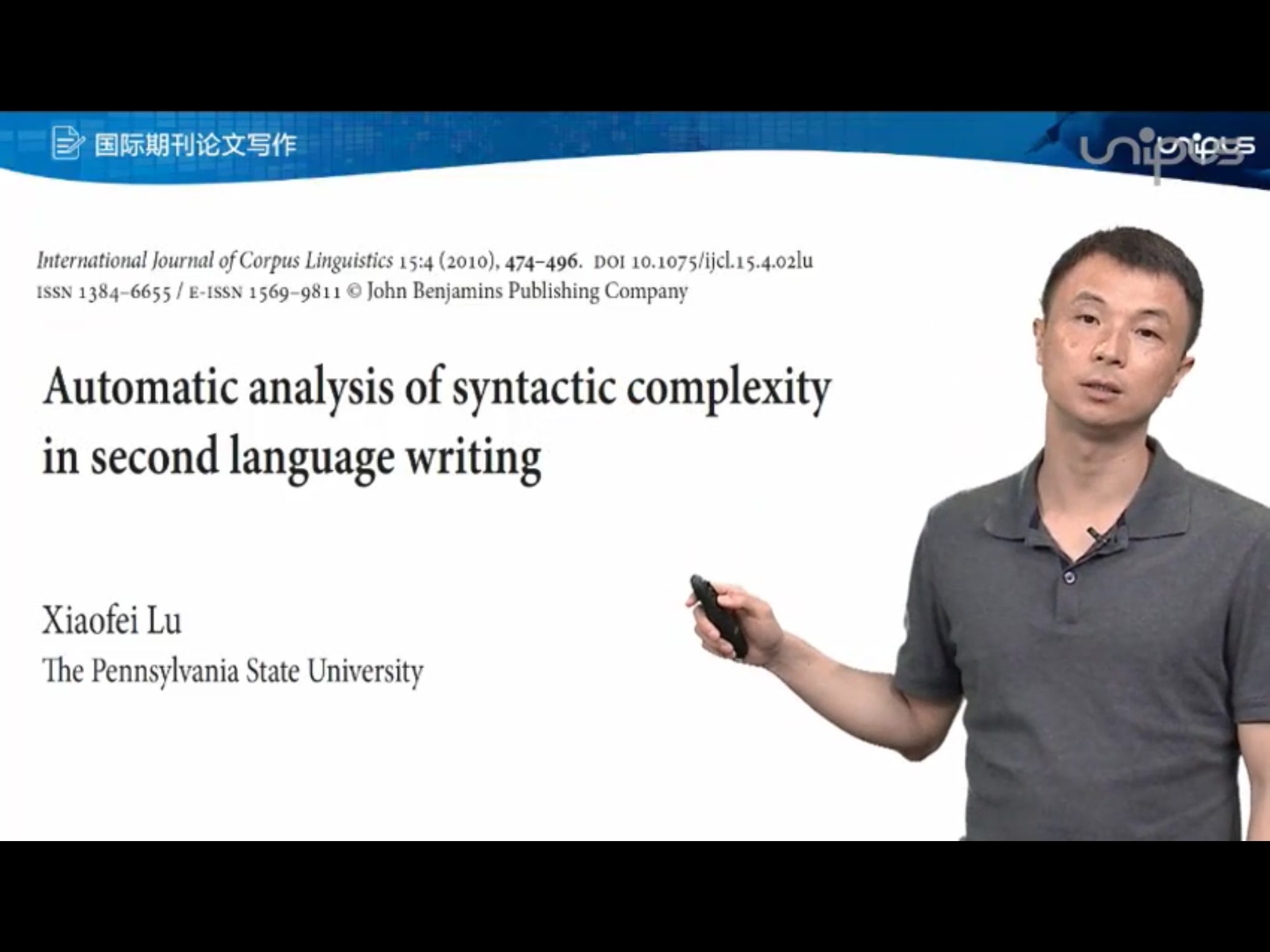
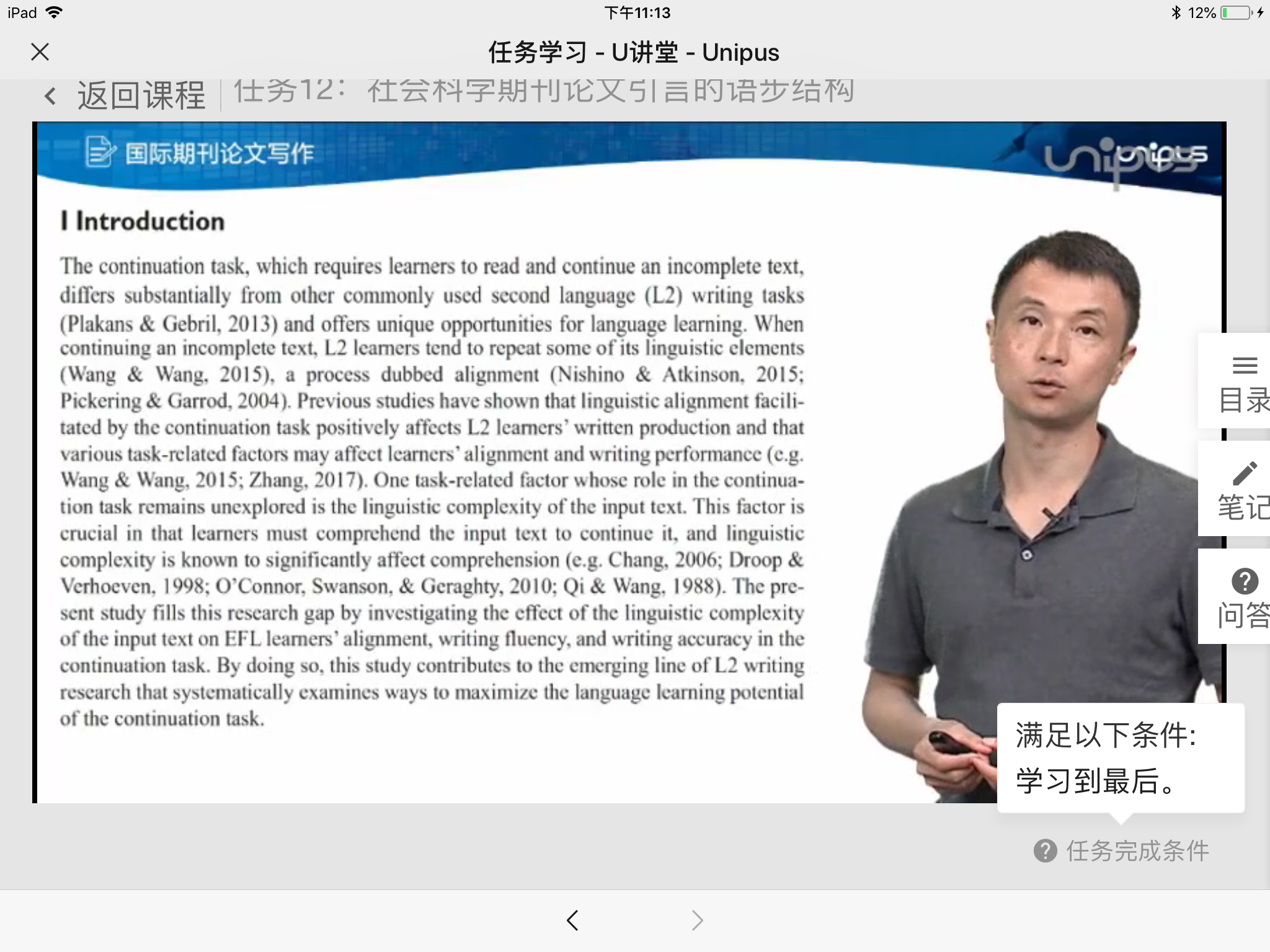

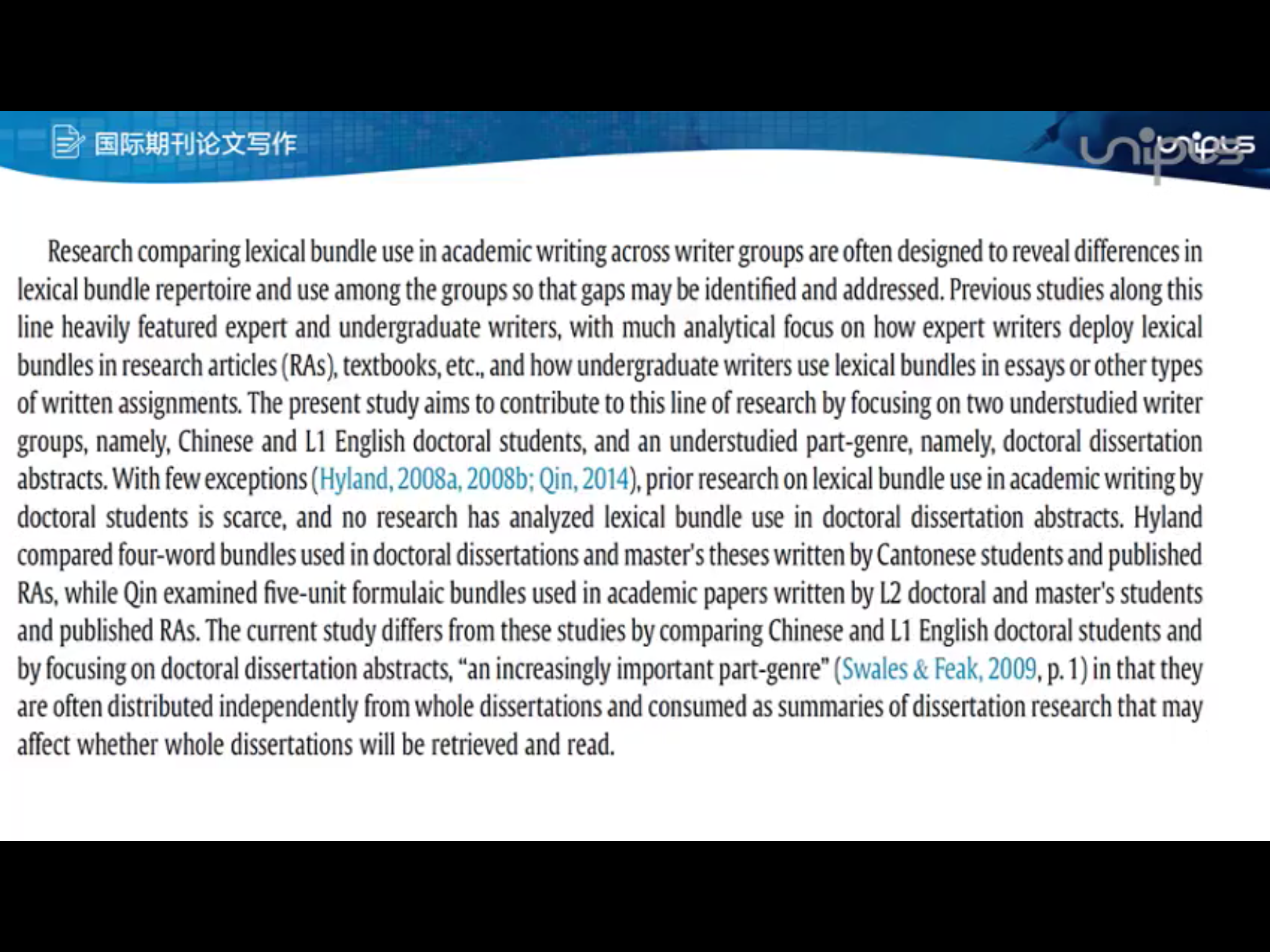
前面两部分对现状,以及这个前人研究的空白,或者是不完善的地方提出来,然后第三段,要讲具体的,我们要做什么怎么做,而不是空谈一些理论上的对接,这个时候就要开始引入一些研究的思路已及构架了。
陆:二语句法复杂度分析器
摘要出现在会议、期刊论文和硕博论文
文体结构和语言特征相结合
摘要的语步(交际功能-John Swell)
1. 建立研究领域:
step 1: 研究领域的重要性或语境-53.9%
不是每一节分开都而是综合各种因素写出一个有机整体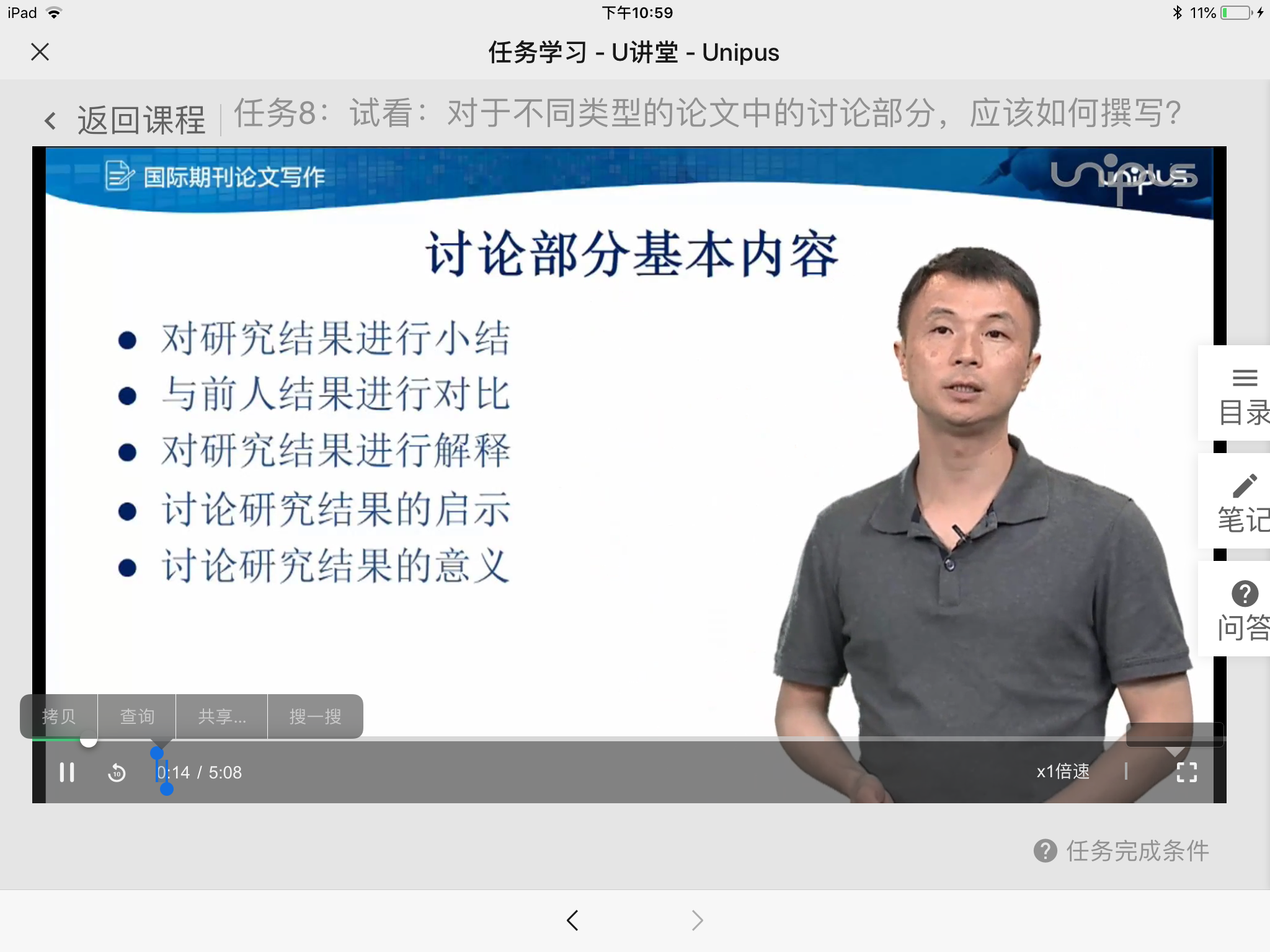
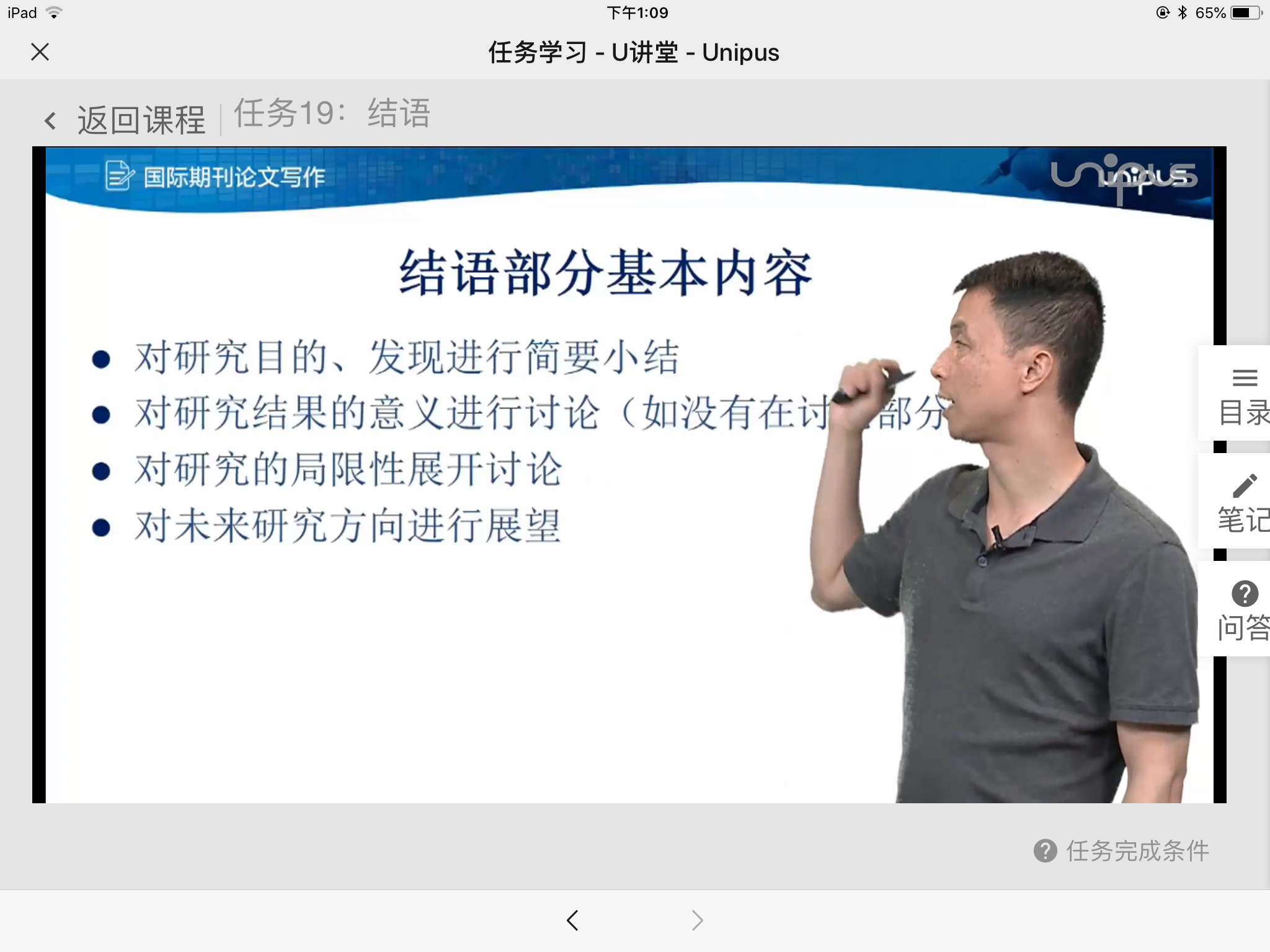 探究什么发现什么
探究什么发现什么
测试意义 教学意义 研究意义 研究方法意义deng
与研究问题对应,分小节呈现,清晰、简洁
全新研究问题——对前人研究意义与启示
从理论出发形成的研究假设——总结结果是否支撑——讨论结果出现的原因——意义与启示
《怎样写好论文标题》
标题作用: 1.有利于被检索; 2. 准确概括研究内容
三类标题:1.与研究相关的具体标题; 2. 体现研究对象或范畴; 3. 与研究目标相关的标题; 4.与研究话题或角度相关的概括性话题
会议和期刊论文《摘要》的结构与预言特征
语歩
Move-step description and frequencies
一、 研究方法基本内容
research question
研究问题的新意决定了论文的新意和意义
研究问题一般为2-3个
各个研究问题既相对独立有互有关联
研究问题的表述要简洁、精确
二、 研究方法
Participants (of the study):取样方法、背景描述、 分组方法
注意从审稿人与读者的角度出发,为研究方法的各部分提供充分的描述、细节与支撑
Participants(of the study) :取样方法、背景描述、分组方法
(Corpus) Data:数据描述、数据代表性Instruments(of data collection) :工具描述、举例、信度与效度
Procedure(of study and/or data
collection) :时间先后顺序、间隔
Dataanalysis:measures, data analyticmethods:数据分析指标选取标准、数据分析工具以及准确率介绍、数据分析方法介绍注意突出哪些数据种类与数据分析方法用于回答哪些研究问题 研究方法其他部分
注意从审稿人与读者的角度出发,为研究方法的各部分提供充分的描述、细节与支撑
Participants(of the study) :取样方法、背景描述、分组方法
(Corpus) Data:数据描述、数据代表性Instruments(of data collection) :工具描述、举例、信度与效度
Procedure(of study and/or data
collection) :时间先后顺序、间隔
Dataanalysis:measures, data analyticmethods:数据分析指标选取标准、数据分析工具以及准确率介绍、数据分析方法介绍注意突出哪些数据种类与数据分析方法用于回答哪些研究问题 研究方法其他部分
注意从审稿人与读者的角度出发,为研究方法的各部分提供充分的描述、细节与支撑
Participants(of the study) :取样方法、背景描述、分组方法
(Corpus) Data:数据描述、数据代表性Instruments(of data collection) :工具描述、举例、信度与效度
Procedure(of study and/or data
collection) :时间先后顺序、间隔
Dataanalysis:measures, data analyticmethods:数据分析指标选取标准、数据分析工具以及准确率介绍、数据分析方法介绍注意突出哪些数据种类与数据分析方法用于回答哪些研究问题v
如何确立标题
1.与研究问题相关的具体标题
Effect of the linguistic complexity of the input text on alignment, writing fluency, and writing accuracy in continuation task
2. 与分析对象或研究范畴范畴相关的具体标题
A longitudinal study of receptive vocabulary breath knowledge growth and vocabulary fluency development
3.与研究目标相关的具体标题
Towards a metaphor-annotated corpus of Mandarin Chinese
4.与研究话题或角度相关的概括性标题
Exploring the affordances of telepresence robots in foreign language learning